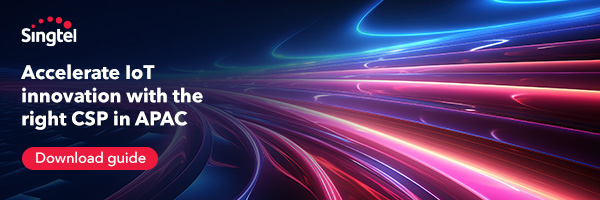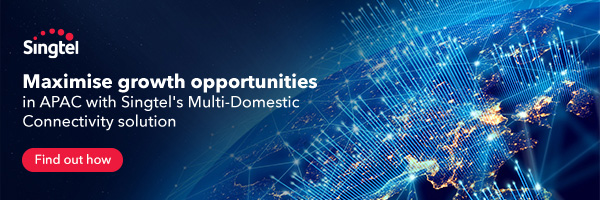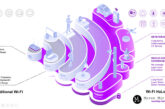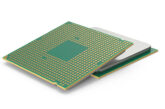
- Amazon Monitron provides customers an end-to-end machine monitoring solution comprised of sensors, gateway, and machine learning service to detect abnormal equipment conditions that may require maintenance
- Amazon Lookout for Equipment gives customers with existing equipment sensors the ability to use AWS machine learning models to detect abnormal equipment behavior and enable predictive maintenance
- AWS Panorama Appliance enables customers with existing cameras in their industrial facilities with the ability to use computer vision to improve quality control and workplace safety
- AWS Panorama Software Development Kit (SDK) allows industrial camera manufacturers to embed computer vision capabilities in new cameras
- Amazon Lookout for Vision uses AWS-trained computer vision models on images and video streams to find anomalies and flaws in products or processes
- Axis, ADLINK Technology, BP, Deloitte, Fender, GE Healthcare, and Siemens Mobility among customers and partners using new AWS industrial machine learning services
Today at AWS re:Invent, Amazon Web Services, Inc. (AWS), an Amazon.com company, announced Amazon Monitron, Amazon Lookout for Equipment, the AWS Panorama Appliance, the AWS Panorama SDK, and Amazon Lookout for Vision.
Together, these five new machine learning services help industrial and manufacturing customers embed intelligence in their production processes in order to improve operational efficiency, quality control, security, and workplace safety. The services combine sophisticated machine learning, sensor analysis, and computer vision capabilities to address common technical challenges faced by industrial customers, and represent the most comprehensive suite of cloud-to-edge industrial machine learning services available. This is why more than a hundred thousand customers are using AWS for machine learning, and why customers of all sizes and across all industries are using AWS services to make machine learning core to their business strategy.
Companies are increasingly looking to add machine learning capabilities to industrial environments, such as manufacturing facilities, fulfillment centers, and food processing plants. For these customers, data has become the connective tissue that holds their complex industrial systems together. Industrial systems typically have numerous interdependent processes that operate with small tolerances for error, and even minor issues can have major ramifications. Being able to analyze data about the equipment operating in their facilities helps customers address this challenge, and many customers have embraced services like AWS IoT SiteWise as a way to collect data and generate real-time performance metrics from their industrial equipment. As customers have begun to use the cloud to collect and analyze industrial data, they have also asked for new ways to incorporate machine learning to help make sense of the data and further drive operational efficiency. In some cases, customers want to use machine learning to help them realize the promise of predictive maintenance to reduce costs and improve operational efficiency. In other cases, customers running in disconnected or latency-sensitive environments want to use computer vision at the edge to spot product defects and improve workplace safety. With these evolving needs and opportunities, industrial companies have asked AWS to help them leverage the cloud, the industrial edge, and machine learning together to get even more value from the vast amounts of data being generated by their equipment.
Amazon Monitron and Amazon Lookout for Equipment enable predictive maintenance powered by machine learning
A major challenge facing industrial and manufacturing companies today is the ongoing maintenance of their equipment. Historically, most equipment maintenance is either reactive (after a machine breaks) or preventive (performed at regular intervals to ensure a machine doesn’t break). Reactive maintenance can result in significant costs and downtime, while preventive maintenance can be costly, result in over-maintenance, or fail to prevent breakdown if not performed often enough. Predictive maintenance (the ability to foresee when equipment is likely to need maintenance) is a more promising solution. However, in order to make it work, companies have historically needed skilled technicians and data scientists to piece together a complex solution from scratch. This included identifying and procuring the right type of sensors for the use case and connecting them together with an IoT gateway (a device that aggregates and transmits data). Companies then had to test the monitoring system and transfer the data to on-premises infrastructure or the cloud for processing. Only then could the data scientists on staff build machine learning models to analyze the data for patterns and anomalies, or create an alerting system when an outlier was detected. Some companies have invested heavily in installing sensors across their equipment and the necessary infrastructure for data connectivity, storage, analytics, and alerting. But even these companies typically use rudimentary data analytics and simple modeling approaches that are expensive and often ineffective at detecting abnormal conditions compared to advanced machine learning models. Most companies lack the expertise and staff to build and refine the machine learning models that would enable highly accurate predictive maintenance. As a result, few companies have been able to successfully implement predictive maintenance, and those that have done it are looking for ways to further leverage their investment, while also easing the burden of maintaining their homegrown solutions.
Here’s how the new AWS machine learning services can help:
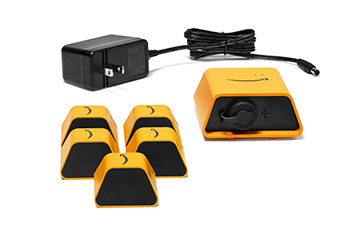
- For customers who do not have an existing sensor network, Amazon Monitron offers an end-to-end machine monitoring system comprised of sensors, a gateway, and a machine learning service to detect anomalies and predict when industrial equipment will require maintenance. Amazon Monitron enables customers to remove cost and complexity from building a sophisticated, machine learning-driven predictive maintenance system from scratch, and it also allows them to focus on their core manufacturing, supply chain, and operations functions. Amazon Monitron detects when machines are not operating normally based on abnormal fluctuations in vibration or temperature, and notifies customers when to examine machinery in order to determine if preventative maintenance is needed. The end-to-end system includes IoT sensors to capture vibration and temperature data, a gateway to aggregate and transfer data to AWS, and a machine learning cloud service that can detect abnormal equipment patterns and deliver results in minutes with no machine learning or cloud experience required. With Amazon Monitron, maintenance technicians can start tracking machine health in a matter of hours, without any development work or specialized training. Amazon Monitron can be used on a variety of rotating equipment, such as bearings, motors, pumps, and conveyer belts in industrial and manufacturing settings. Use cases range from monitoring a few critical machines like the cooling fans or water pumps used in data centers, to large scale installations in manufacturing facilities with production and conveyance systems. Amazon Monitron also includes a mobile app for a customer’s onsite maintenance technicians to monitor equipment behavior in real time. With the mobile app, a technician can receive alerts of any abnormal equipment conditions across different machines, check up on the health of the machine, and decide if they need to schedule maintenance. To increase the accuracy of the system, technicians can enter feedback on the accuracy of the alerts in the mobile app, and Amazon Monitron learns from that feedback to continually improve over time. Amazon Monitron is now generally available.
- For customers that have existing sensors but don’t want to build machine learning models, Amazon Lookout for Equipment provides a way to send their sensor data to AWS to build models for them and return predictions to detect abnormal equipment behavior. To get started, customers upload their sensor data to Amazon Simple Storage Service (S3) and provide the S3 location to Amazon Lookout for Equipment. Amazon Lookout for Equipment can also pull data from AWS IoT SiteWise, and works seamlessly with other popular machine operations systems like OSIsoft. Amazon Lookout for Equipment analyzes the data, assesses normal or healthy patterns, and then uses the learnings from all of the data on which it is trained to build a model that is customized for the customer’s environment. Amazon Lookout for Equipment can then use the machine learning model to analyze incoming sensor data and identify early warning signs for machine failure. This allows customers to do predictive maintenance, saving them money and improving productivity by preventing the crash of an industrial system line. Amazon Lookout for Equipment allows customers to get more value from their existing sensors, and it helps customers make timely decisions that can materially improve the entire industrial process.
AWS Panorama uses computer vision to improve industrial operations and workplace safety
Many industrial and manufacturing customers want to be able to use computer vision on live video feeds of their facility and equipment to automate monitoring or visual inspection tasks and to make decisions in real time. For example, customers routinely need to inspect high-speed processes to determine if adjustments are needed (e.g. fine milling or laser tooling), to monitor site and yard activity to ensure operating compliance (e.g. ensure pedestrians and forklifts remain in designated work zones), or to assess worker safety within their facilities (e.g. appropriate social distancing or use of PPE). However, the typical monitoring methods used today are manual, error prone, and difficult to scale. Customers could build computer vision models in the cloud to monitor and analyze their live video feeds, but industrial processes typically need to be physically located in remote and isolated places, where connectivity can be slow, expensive, or completely non-existent. This problem is even more difficult for industrial processes that involve manual review like quality checks on manufactured parts or security feeds. For example, if a quality issue emerges on a high throughput production line, customers want to know immediately because the costs of letting the problem persist is steep. This type of video feed could be automatically processed in the cloud using computer vision, but video feeds are high bandwidth and can be slow to upload. As a result, customers are required to monitor video feeds in real time, which is hard to do, error prone, and expensive. While there is a desire to use smart cameras that have enough processing power to run these models, getting low latency performance with good accuracy from these cameras can be challenging. Most customers end up running unsophisticated models that can’t be programmed to run custom code that integrates into the industrial machines.
Here’s how AWS can now help:
- The AWS Panorama Appliance provides a new hardware appliance that allows organizations to add computer vision to existing on-premises cameras that customers may already have deployed. Customers start by connecting the AWS Panorama Appliance to their network, and the device automatically identifies camera streams and starts interacting with the existing industrial cameras. The AWS Panorama Appliance is integrated with AWS machine learning services and IoT services that can be used to build custom machine learning models or ingest video for more refined analysis. The AWS Panorama Appliance extends AWS machine learning to the edge to help customers make predictions locally in sites without connectivity. Each AWS Panorama Appliance can run computer vision models on multiple camera streams in parallel, making possible use cases like quality control, part identification, and workplace safety. The AWS Panorama Appliance works with AWS and third party pre-trained computer vision models for retail, manufacturing, construction, and other industries. Also, customer-developed computer vision models developed in Amazon SageMaker can be deployed on the AWS Panorama Appliance.
- The AWS Panorama Software Development Kit (SDK) enables hardware vendors to build new cameras that can run meaningful computer vision models at the edge. Cameras that are built with the AWS Panorama SDK run computer vision models for use cases like detecting damaged parts on a fast-moving conveyor belt or spotting when machinery is outside of a designated work zone. These cameras can use chips designed for computer vision from NVIDIA and Ambarella. By using the AWS Panorama SDK, manufacturers can build cameras with computer vision models that can process higher quality video with better resolution for spotting issues. They can also build more sophisticated models on low-cost devices that can be powered over Ethernet and placed around a site. Customers can train their own models in Amazon SageMaker and deploy them on cameras built with the AWS Panorama SDK with a single click. Customers can also add Lambda functions to cameras built with the AWS Panorama SDK to be alerted to potential issues via text or email. AWS also offers pre-built models for tasks like PPE detection and social distancing, and can deploy these models in minutes without doing any machine learning work or special optimizations.
Amazon Lookout for Vision offers automated fast and accurate visual anomaly detection for images and video at a low cost
One use case where AWS customers are excited to deploy computer vision with their cameras is for quality control. Industrial companies must maintain constant diligence to maintain quality control. In the manufacturing industry alone, production line shutdowns due to overlooked errors result in millions of dollars of cost overruns and lost revenue every year. The visual inspection of industrial processes typically requires human inspection, which can be tedious and inconsistent. Computer vision brings the speed and accuracy needed to identify defects consistently, but implementation can be complex and require teams of data scientists to build, deploy, and manage the machine learning models. Because of these barriers, machine learning-powered visual anomaly systems remain out of reach for the vast majority of companies.
Here’s how AWS can now help these companies:
- Amazon Lookout for Vision offers customers a high accuracy, low-cost anomaly detection solution that uses machine learning to process thousands of images an hour to spot defects and anomalies. Customers send camera images to Amazon Lookout for Vision in batch or in real-time to identify anomalies, such as a crack in a machine part, a dent in a panel, an irregular shape, or an incorrect color on a product. Amazon Lookout for Vision then reports the images that differ from the baseline so that appropriate action can be taken. Amazon Lookout for Vision is sophisticated enough to handle variances in camera angle, pose, and lighting arising from changes in work environments. As a result, customers can accurately and consistently assess machine parts or manufactured products by providing as few as 30 images of the baseline “good” state. Amazon Lookout for Vision also runs on Amazon Panorama appliances. Customers can run Amazon Lookout for Vision in AWS starting today, and beginning next year, customers will be able to run Amazon Lookout for Vision on AWS Panorama Appliances and other AWS Panorama devices so customers will be able to use Amazon Lookout for Vision in locations where Internet connectivity is limited or non-existent.
“Industrial and manufacturing customers are constantly under pressure from their shareholders, customers, governments, and competitors to reduce costs, improve quality, and maintain compliance. These organizations would like to use the cloud and machine learning to help them automate processes and augment human capabilities across their operations, but building these systems can be error prone, complex, time consuming, and expensive,” said Swami Sivasubramanian, Vice President of Amazon Machine Learning for AWS.
“We’re excited to bring customers five new machine learning services purpose-built for industrial use that are easy to install, deploy, and get up and running quickly and that connect the cloud to the edge to help deliver the smart factories of the future for our industrial customers.”

